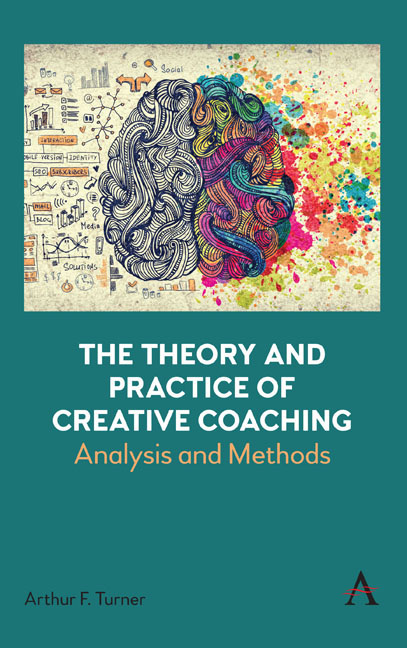Book contents
- Frontmatter
- Contents
- About the Author
- Preface
- Influences
- Introduction
- Section 1 Theory and Research
- Sections 2 and 3 Theory to Practice
- Section 2 Alternative Foci
- Section 3 Three Detailed Examples of Creativity in the Service of Executive Coaching (Walking, the Use of Finger Puppets and the Use of Music)
- Index
- Frontmatter
- Contents
- About the Author
- Preface
- Influences
- Introduction
- Section 1 Theory and Research
- Sections 2 and 3 Theory to Practice
- Section 2 Alternative Foci
- Section 3 Three Detailed Examples of Creativity in the Service of Executive Coaching (Walking, the Use of Finger Puppets and the Use of Music)
- Index
Summary
The next five chapters, in second and third sections, are detailed accounts of techniques that outline some of my favourite alternative approaches to coaching. Section 2 highlights two very important and often-neglected topics in coaching: the use of silence and the role of playfulness and the use of humour in sessions with clients. Section 3 focuses on the more detailed treatments of specific techniques, that of walking, using finger puppets and the use of music, all presented briefly in Section 1. Inevitably, these techniques are presented as separate entities to focus on each one but the principles and permeating ideas, in each technique, often overlap. This overlapping and interweaving call for the practising coach to use these interventions not as a discreet consistent approach but in a way consistent with both flexibility and sharp attention (intuitive responses to what the client is offering) to that client at that particular moment. The use of metaphors in an ambient backdrop creates the potential for a narrative that is rich, diverse and transformational (Seto and Geithner, 2018). A lot more is waiting to be discovered in how these alternative approaches interface with more standard techniques as more and more practitioners adopt creative and unusual ways of engaging their clients in meaningful dialogue. The link between the models and more creative approaches can be summed up by exemplifying a modern jazz musician. These musicians spend a lot of time practising their scales in order to play their instrument in a way that is expressive and so that the player remains true to themselves with their musical integrity intact. In many ways, this also has links to the world of improvisation and stand-up comedy. The following chapters will shed light on how a variety of coaching activities can be called into action to augment the coach and their client(s) (Read, 2013).
- Type
- Chapter
- Information
- The Theory and Practice of Creative CoachingAnalysis and Methods, pp. 61 - 62Publisher: Anthem PressPrint publication year: 2023

